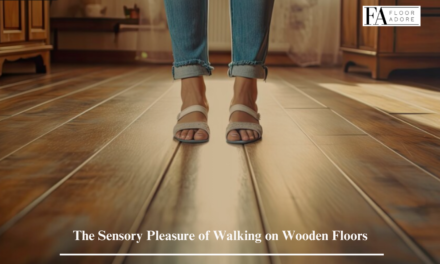In the ever-evolving world of interior design, the push toward sustainability has led to a significant shift in the materials and products chosen by designers and homeowners alike. Amidst this green revolution, lamiwood wooden flooring has emerged as a darling of eco-conscious designers and clients. Combining environmental responsibility with aesthetic appeal, lamiwood offers a sustainable wood flooring solution that does not sacrifice style for sustainability. This blog explores the reasons behind lamiwood’s popularity among green designers and how it aligns with sustainable design principles.
The Sustainability of Lamiwood
Lamiwood flooring, a synthetic product that mimics the look of wood, stone, and other natural materials, has several eco-friendly attributes that endear it to environmentally-conscious designers. Here are a few key factors:
- Responsible Resource Use: Lamiwood is primarily made from composite wood pressed together at high temperatures. The wood used in lamiwood often comes from fast-growing, less endangered species of trees, or wood waste, making it a more sustainable choice compared to hardwood floors that may contribute to deforestation.
- Durability and Longevity: One of the core principles of sustainable design is longevity, and lamiwood floors excel in this area. Highly durable and resistant to scratches, dents, and fading, lamiwood can last for decades with proper care, reducing the need for frequent replacements and, consequently, the consumption of resources.
- Low VOC Emissions: Modern lamiwood wood flooring products are manufactured with low volatile organic compound (VOC) emissions in mind. VOCs contribute to air pollution and can have health implications. Many lamiwood options comply with strict environmental standards, ensuring healthier indoor air quality.
- Energy-Efficient Production: The manufacturing process of lamiwood is generally more energy-efficient compared to that of traditional hardwood. By requiring less energy to produce, lamiwood has a smaller carbon footprint, further contributing to its eco-friendly credentials.
The Aesthetic Appeal of Lamiwood
While the sustainability of lamiwood floors is a significant factor, its popularity among green designers also stems from its versatility and aesthetic appeal. Lamiwood offers an extensive range of styles, colors, and wooden flooring finishes, allowing designers to achieve various looks without compromising environmental ethics.
- Versatility in Design: Whether the goal is to mimic the warm, rustic appeal of real wood or the cool elegance of stone, lamiwood provides endless design possibilities. This versatility enables designers to fulfill any client’s vision, making it an ideal choice for eco-friendly interior projects.
- Innovation and Trends: Lamiwood manufacturers continually innovate, producing more realistic and high-quality designs. Advances in imaging and embossing technologies mean that lamiwood can closely replicate the texture and appearance of natural materials, catering to the latest design trends while remaining sustainable.
- Easy Maintenance: Beyond its aesthetic versatility, lamiwood is loved for its ease of maintenance. Unlike real wood or stone, which may require regular sealing or special cleaning agents, lamiwood floors can be easily cleaned with minimal water and eco-friendly cleaning products, aligning with the ethos of sustainable living.
Conclusion
Eco-friendly and adorable, lamiwood wood flooring stands at the intersection of sustainability and style, making it a favored choice among green designers. By choosing lamiwood, designers do not have to choose between protecting the planet and achieving their creative visions. As the demand for sustainable interior design solutions grows, lamiwood’s popularity is set to rise, cementing its status as a go-to choice for those looking to combine eco-consciousness with aesthetic appeal. In embracing lamiwood, designers and homeowners alike can contribute to a more sustainable future, one beautiful space at a time.





